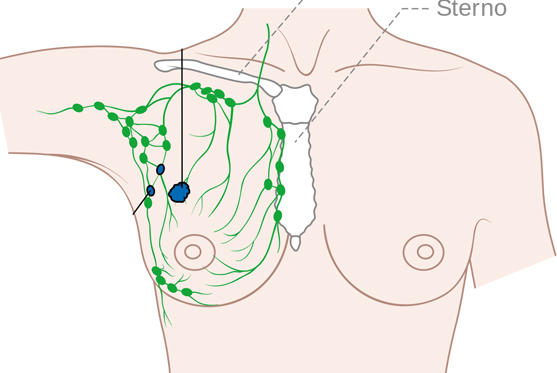
Breast cancer is a type of cancer that begins in the cells of the breast. It is one of the most common cancers affecting women worldwide, though it can also occur in men. Here’s a comprehensive overview of breast cancer, including its types, risk factors, symptoms, diagnosis, treatment, and prevention.
Types of Breast Cancer
1. Ductal Carcinoma In Situ (DCIS): A non-invasive cancer where abnormal cells are found in the lining of a breast duct.
2. Invasive Ductal Carcinoma (IDC): The most common type, where cancer cells spread beyond the ducts into the surrounding breast tissue.
3. Invasive Lobular Carcinoma (ILC): Cancer that begins in the lobules (milk-producing glands) and spreads to nearby tissues.
4. Triple-Negative Breast Cancer: Lacks estrogen receptors, progesterone receptors, and HER2 proteins, making it difficult to treat.
5. HER2-Positive Breast Cancer: Has high levels of the HER2 protein, which promotes cancer cell growth.
6. Inflammatory Breast Cancer: A rare and aggressive form where cancer cells block lymph vessels in the skin of the breast.
7. Paget’s Disease of the Nipple: A rare form affecting the skin of the nipple and areola.


Risk Factors
1. Gender: Being female is the highest risk factor.
2. Age: Risk increases with age.
3. Family History: Having close relatives with breast cancer.
4. Genetics: BRCA1 and BRCA2 gene mutations significantly increase risk.
5. Hormone Replacement Therapy (HRT): Long-term use increases risk.
6. Reproductive History: Early menstruation, late menopause & having children late or not at all.
7. Lifestyle Factors: Alcohol consumption, obesity, and lack of physical activity.
Symptoms
1. A lump in the breast or underarm.
2. Change in size, shape, or appearance of the breast.
3. Dimpling or puckering of the skin.
4. Nipple retraction or discharge.
5. Redness or flaky skin on the breast or nipple.
6. Persistent breast pain.
Diagnosis
1. Physical Examination: Clinical breast exams.
2. Imaging Tests: Mammograms, ultrasound, and MRI.
3. Biopsy: Removing tissue for laboratory analysis.
4. Genetic Tests: Testing for BRCA1 and BRCA2 mutations.
5. Blood Tests: Checking for tumor markers and overall health.
Treatment
Treatment varies based on the type and stage of cancer, as well as individual patient factors. Common treatments include:
1. Surgery:
i. Lumpectomy: Removing the tumor and a small margin of surrounding tissue.
ii. Mastectomy: Removing one or both breasts, partially or completely.
2. Radiation Therapy: Using high-energy rays to target and kill cancer cells.
3. Chemotherapy: Using drugs to destroy cancer cells, often used before surgery (neoadjuvant) or after surgery (adjuvant).
4. Hormone Therapy: Blocking hormones that fuel certain types of breast cancer.
5. Targeted Therapy: Drugs that specifically target cancer cell properties, such as HER2-positive cancers.
6. Immunotherapy: Boosting the body’s immune system to fight cancer cells.
Prevention
1. Regular Screening: Mammograms and clinical breast exams for early detection.
2. Healthy Lifestyle: Maintaining a healthy weight, regular exercise, limiting alcohol, and avoiding smoking.
3. Medications: In high-risk women, medications like tamoxifen or raloxifene can reduce risk.
4. Preventive Surgery: For those with very high risk (e.g., BRCA mutations), prophylactic mastectomy or oophorectomy may be considered.
Breast cancer research is ongoing, focusing on better understanding the disease, developing new treatments, and improving early detection. Advances in genetic testing, personalized medicine, and targeted therapies have significantly improved outcomes for many patients.
Early detection and advancements in treatment have improved survival rates, making it possible for many people to lead fulfilling lives after a breast cancer diagnosis.